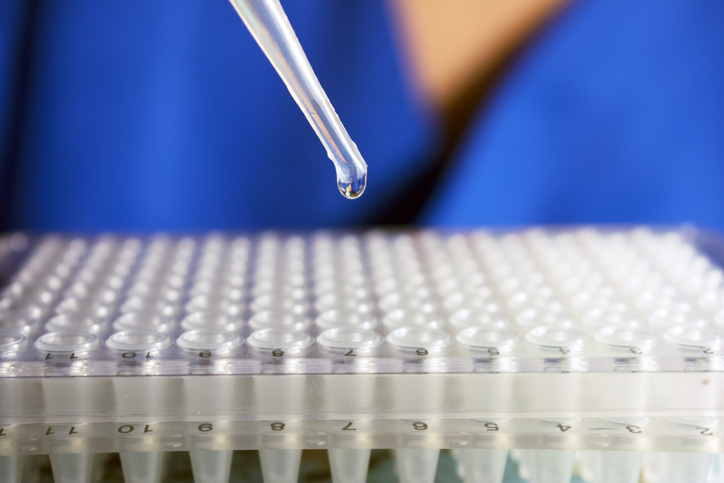During the last three decades, scientists have made tremendous progress in targeting HIV. Antiretroviral drugs have enabled people with HIV to live much longer and healthier lives. That picture brightened even further 12 years ago, when a man was reported cured of the disease following a bone marrow transplant. But for years, scientists failed in duplicating the success of the so-called “Berlin patient.” Now news from a scientific conference once again dangled the tantalizing possibility that a second person with HIV had been cured.
On March 5, scientists reported at the Conference on Retroviruses and Opportunistic Infections that a second HIV patient, known as the “London patient,” appeared to have been sent into an extended remission—some going so far as to call it a cure.
This outcome was achieved under extraordinary circumstances, and, as Penn researchers point out, leaves room for both celebration and caution.
“It’s good news for the field,” says Pablo Tebas, a professor of medicine at the Hospital of the University of Pennsylvania and director of the AIDS Clinical Trials Unit. “It shows that this effect is reproducible.”
Ronald Collman, a professor at Penn’s Perelman School of Medicine who directs the Center for AIDS Research (CFAR), agrees. “This reiterates the importance of continuing this line of research, which is a particularly strong area at Penn within the CFAR,” he says, “because it shows that the underlying concept is in fact tenable and was not a singular fluke in the case of the Berlin patient.”
The London patient underwent a stem-cell transplant as a treatment for a form of blood cancer that was not responding to chemotherapy. The stem cell donor had a unique mutation in the CCR5 gene, which lends resistance to HIV. About one in a hundred people of European descent naturally carry two copies of this mutation.
While researchers have attempted similar transplants to achieve HIV remission before, patients have either succumbed to their cancer or the virus returned after they stopped taking antiretroviral medicines.
But in the Berlin and London patients, for reasons that remain unclear, the transplants seem to have vanquished both their cancer and HIV infections. The London patient stopped antiretroviral medications 18 months ago, and a battery of sensitive tests have failed to detect any evidence of HIV in his system. Even more remarkably, the Berlin patient, who has since been identified as Timothy Ray Brown, appears to be an example of a lasting cure. More than a decade since he last took HIV drugs, Brown remains free of the virus.
While it’s a significant step forward, Penn researchers urge restraint in declaring this a wholesale victory for the HIV/AIDS field.
For one thing, bone marrow transplants come with serious risks.
“Just because it can be done doesn’t mean it’s a solution or a cure for all people who have HIV,” says Tebas. Before a transplant, one’s own immune system needs to be suppressed, and afterward graft-versus-host disease can be fatal. In addition, simply finding a matching donor who also has the CCR5 mutation can be challenging.
Research by Tebas, along with Penn Medicine’s Carl June and colleagues offers a promising potential workaround to this strategy, however. In a New England Journal of Medicine report in 2014, the team reported using a gene-editing approach to disrupt CCR5 in HIV patients’ own immune cells, then reinfusing the modified cells. In this small trial, patients who received infusions of their own tailored immune cells and then went off antiretroviral drugs saw their viral loads come back more slowly than normal. One patient who already had one copy of a mutant CCR5 had even more impressive results.
This kind of approach, which relies on a patient’s own cells rather than a donor’s, has promise, Tebas says. And Penn researchers are building on successes with CAR T in cancer therapy to make leapfrogging progress against HIV as well.
“The more cases of cures that you have, the more the public and funding agencies will believe that this is a feasible goal, that this is something that should continue to be pursued,” says Tebas. “That’s a good development.”
Bridgette Brawner, an associate professor in the School of Nursing, agrees that the news is “phenomenal,” but believes that when considering communities living with HIV, or at risk of contracting the infection, the development may be seen with a mixed reaction.
For historically underserved groups, she says, issues of trust may make them disinclined to participate in the studies necessary to translate a one-off success into a therapy for the masses. And a lack of diversity among participants could compromise a study’s ability to determine whether a given therapy would be effective for a broader population.
Furthermore, Brawner underscores that attention must be kept on the people who are living with the virus today to ensure that resources continue to go to support them.
“There is a concern that money may be getting thrown at a cure for ‘one day’ when there are already people around the world who may not have access to the drug regimens that are helping them live longer, healthier lives today,” she says.
This recent breakthrough can be seen as an opportunity, Brawner notes, to ensure that future research is conducted with a proactive approach to such issues.
“Whenever we have scientific advances like this, I think they’re absolutely wonderful,” she says. “But I would just love, as we carry this forward, if we could also think about the downstream implications: What does this mean for the people we say we’re developing this cure for? And, will we invite them to the table to be a part of the process?”








